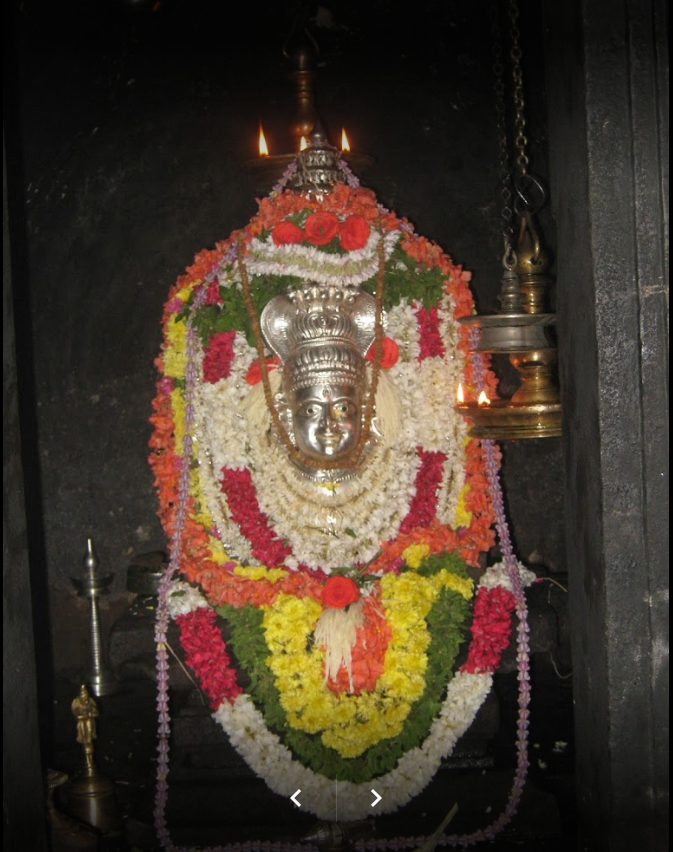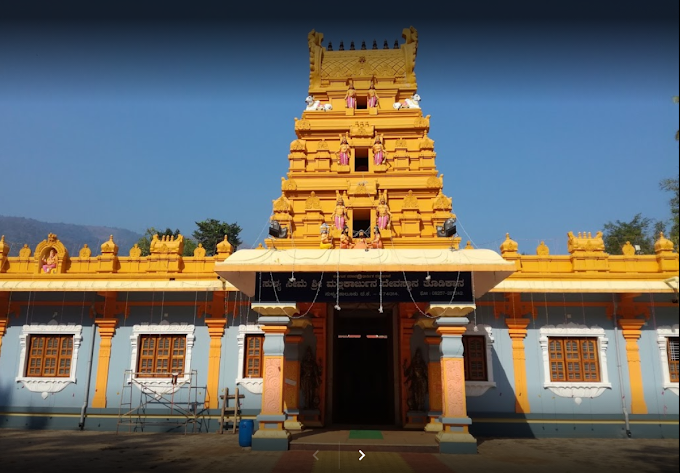Ernakulam Thirumala Devaswom
The History of the temple is associated very much to the History of the Gowda Saraswaths.
For a vivid picture of the Temple History, it is important to know the history of the Gowda Saraswaths, the history of the purohits etc.
History Of Gowda Saraswaths
Gowda Saraswaths lived on the banks of the great mythical river Saraswathi (parts of present Punjab and Rajasthan) and migrated to Trihotrapura (Modern Tirhut in Bihar) when the river dried up sometime in 323 BC. Lord Parasurama brought ten Rishi families from Trihotrapura to Gomantaka, (Western provinces of Goa) (Part of Konkan Desh), Panchakrosi and Kushasthali and settled them there. Hence the name Konkani for their language. They migrated down to Kerala leaving their land, homes and their worldly fortunes at Goa due to religious persecution by the Portuguese, with their Kuladevatas to save their Religion, Dharma and culture, landed in Calicut and were promptly driven out by the Zamorin of Calicut. They traveled southward and landed in many parts of Cochin and Travancore states (mostly coastal areas). The rulers of the land, like Vira Kerala Varma gave them shelter and encouragement with certain special rights and privileges within their particular Sanketams, like Gosripuram. This happened somewhere around 1560 AD. They later established their own temples.
The Brahmins of whole of India were divided into two, Gaudas and Dravidas, those living to the north and south of Vindhyas respectively. The rishi families brought by the Parasurama were therefore Gaudas and the Saraswaths prefix the word 'Gowda' to their name, meaning that they belong to the Panchagowdas, or the northern Brahmins. They followed the Venkateswara cult propagated by the Great Vaishnava Guru Madhwacharya and hence the idol of the Lord Venkatesha of Thirumala, Tirupathi is installed in their temples.
History of Temple
Out of eight families who came to Ernakulam, the prominent among them was Shri. Devaresa Prabhu, under whose leadership the chief among the priests, Shri. Damodarachari, joined together in a meeting of the community and decided to construct a small temple of their own. Cheranalloor Karta, who was a ruler and a prominent landÂlord gave land for construction of the temple in 902 M.E. (1727 AD). The Prathishta was held on the 'Uthrattathi' Nakshatra in the month of Mithunam, In the Garbhagriha (Sanctum Sanctorum), we see Lord Venkatachalapathi with consorts Sreedevi and Bhudevi on the top, Uthsava Murthi at the centre and, Shri Mahalakshmi idol at the bottom. The festival idol (Ulsava Murthi as stated above) and Bali Vigraha were given by the main cultural settlement at Cochin Thirumala Devaswom (CTD). The Bali Vigraha is kept a little away on the left side of Mahalakshi idol.
On the south west corner, outside Garbhagriha, we see Sri Mahaganapathy. In 928 M.E, prathishta of Hanuman idol dedicated by Mandavana family was done in the mandapa facing north. In 1000 M.E Kappashery Dasa Shenoy family dedicated Sri. Mahalakshmi idol and was consecrated on the northern side of the mandap facing south. A Garuda temple was constructed facing East at the North-west corner in 1986.
The temple was renovated and the agrashalas were constructed around the temple. The temple was reconsecrated for the second time on the Revathi Nakshatra in the month of Makaram, 955 M.E (1780 A.D). In the year 1008, the Dhwaja Prathishta was held and in 1072 M.E (1897 A.D), the third Puna-Prathishta Mahotsav was celebrated with great pomp and show. It was one of the great occasion in the history of the community as Srimad Varadendra Thirtha Swamiji of Sri.Kashi Mutt blessed this occasion. The Maharaja of Cochin had a Darshan of the deity and offered his prayers at the lotus feet. His Highness adored the wooden carvings depicting the stories from the epics, Ramayana and Mahabharata and other Puranas.
In ME 1132 (1957), the 60th anniversary (Shashtiabdapoorthi) of the puna-prathishta was celebrated with much fanfare. Sahasra Kalashabhishekam was performed in the holy presence of Srimad Sudhindra Thirta Swamiji of Sri. Kashimutt. To commemorate this grand occasion, Eastern Gopuram was reconstructed in ME 1137 (1962). All the agrashalas, mandapashalas etc. were renovated in a double storied structure.
The 250th anniversary of the temple was celebrated under the guidance of His Holiness Srimad Sudheendra Thirtha Swamiji on 25th January 1977. To celebrate this occasion, a Gopuram, with beautiful statues and aesthetic architectural features was constructed and it has in due course become a centre of attraction. A Swarna Garuda Vahana was dedicated to Lord Venkatachalapathi, for conducting Garuda Vahana pooja in 1989.
The third Centenary Celebration took place in 1997. To mark this tryst with destiny, a Swarna Palanquin is being constructed and the work is still in progress (75% complete). The Temple-pond Mandap, the Yakshi temple and the pakashalas were renovated. A befitting office complex and a Satram with modern amenities was constructed for the comfort of devotees visiting and offering poojas at the lotus feet of the Lord. The Araat Mahotsavam is conducted on the 'Revathi' Nakshtra in the month of 'Makaram' every year, when devotees in thousands congregate and offer their prayers. An attractive concrete arch with statues was built at the entrance to the T.D. Sannidhi Road from M.G Road on 10.02.2005.
History of Purohits
The temple rituals are conducted by the priests. The descendants of Sri. Damodarachari who had done the Prathishta in 902 ME were the first priests. Later in 998 ME one Sri. Nagendra Vadhyar and in 1008 ME Sri Narayana Vadhyar (who later became the Devaswom Tantri) and in 1028 ME Sri. Narasimha Vadhyar were invited to the temple and appointed as the priests. Sri Padmanabha Vadhyar, a descendant of Sri. Narayana Vadhyar, relinquished his rights as the Tantri and priesthood. The descendants of the other three families are the present priests of the temple.
The incumbant for the post of Tantri is now selected by H H Swamiji of Kasi Matt from a panel submitted by the Managing Adhikaris.
The present Tantri is Sri S Srinivasa Bhat
The present Purohits are:
1. Sri S Srinivasa Bhat
1. Sri R Rajagopala Bhat
3. Sri V Sadasiva Bhat
4. Sri R Srinivasa Bhat
Contact-us
We can be contacted at the following address.
Ernakulam Thirumala Devaswom
T D Road, Panjabjapuram
Kochi - 682035
P: 0484-2361395 2369637Email
mail@ekmthirumala.org ekmtdtemple@gmail.com















